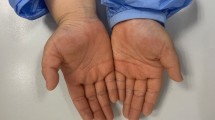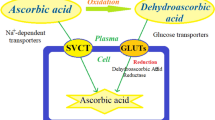Abstract
For acceptance of any chemical agent as an endogenous chemical mediator of inflammation, the agent in question must fulfill some biological requirements which are (a) it should be ubiquitously present in tissues in inactive form, (b) it should be activated during process of inflammation whose increase should be identifiable, (c) it should induce or amplify some events of inflammation, (d) there must be some natural inhibitor of such active form in tissues, (e) it should be able to induce inflammatory reaction after exogenous injection, (f) such reaction should be inhibited by exogenous use of their antagonists, and (g) it should be amplified by use of agonists. Copper in its protein free or protein bound form are reported to act as pathogenic factor in inflammatory processes due to oxidative stress. But their role as endogenous chemical mediator of inflammation does not appear to be investigated thoroughly in light of abovementioned biological criterion of mediator. Present study aims at thorough exploration on role of free copper as endogenous chemical mediator of inflammation in light of above facts. It was done by estimation of total copper, protein-bound copper, and free copper along with estimation of free radical generation, increase in vascular permeability, and cellular infiltration during acute inflammatory reaction induced by carrageenan and concanavalin using chicken skin as test model. It was further evaluated by use of exogenous free copper in experimental model and their subsequent inhibition and amplification by chemical chelators of copper. Present study confirms that free copper fulfilled all the biological requirements for accepting it as an endogenous chemical mediator of inflammation.




Similar content being viewed by others
References
Anderson JR (1987) Muir’s Textbook of pathology, vol 12. ELBS, London, pp 41–438
Andrewartha KA, Caple IW (1980) Effects of changes in nutritional copper on erythrocyte superoxide dismutase activity in sheep. Res Vet Sci 28:101–104
Cartwright GE, Gubler CJ, Wintrobe MM (1954) Studies on copper metabolism. J Clin Invest 33(4):685–698
Clegg MS, Ferrel F, Keen CL (1987) Hypertension induced alterations in copper and zinc metabolism in Dahl rats. Hypertension 9:624–628
Cohen G (1985) In: Greenwald RA (ed) In Handbook of methods of oxygen radicals research. CRC, Boca Raton, pp 55–64
Cotran RS, Majno G (1964) The delayed and prolonged vascular leakage in inflammation, topography of the leaking vessels after thermal injury. Am J Pathol 45:261–281
Cousins RJ (1985) Absorption, transport, and hepatic metabolism of copper and zinc: special reference to metallothionein and ceruloplasmin. Physiol Rev 65:238–309
Culling CFA, Allison RT, Barr WT (1985) Cellular pathology, 9th edn. Butterworth, Maple Ridge
DiSilvestro RA, Elizabeth JMS, Yanga FL (1992) Copper deficiency impairs survival in endotoxin-treated rats. Nutr Res 12:501–508
Dougherty JJ, Hoekstra WG (1982) Effects of vitamin E and selenium on copper induced lipid peroxidation in vivo and on acute copper toxicity. Proc Soc Exp Biol Med 169:201–208
Hochstein P, Kumar KS, Forman SJ (1980) Lipid peroxidation and the cytotoxicity of copper. Ann NY Acad Sci 355:240–248
Ito NMK, Bohm GM (1986) Turpentine induced acute inflammatory response in gallus gallus, oedema, vascular permeability and effects of non-steroidal anti-inflammatory drugs. Res Vet Sci 41:231–236
Johnson GF, Morell AG, Stockert RJ (1981) Hepatic lysosomal copper-protein in dogs with an inherited copper toxicosis. Hepaology 1:1243–1248
Kafy ML, Haigh CG, Lewis DA (1986) In vitro interactions between dangerous endogenous polyamines and superoxide anion. Agents Actions 18(516):555–559
Kaneko JJ (1979) Clinical Biochemistry of Domestic Animals, vol 4. Academic, London, pp 257–258
Keen CL, Graham TW (1979) Trace elements. In: Kaneko JJ (ed) Clinical Biochemistry of Domestic Animals, 4th edn. Academic, New York, pp 753–793
Lea CM, Luttrell VAS (1965) Copper content of hair in Kwashiorkor. Nature 206:413
Marklund SL (1984) Extracellular superoxide dismutase and other superoxide dismutase isoenzymes in tissues from nine mammalian species. Biochem J 222:649–655
Mukherjee U, Chaterjee SN (1994) Oxidative damage of DNA and benzoate by chelated and non-chelated copper in presence of hydrogen peroxide. I J Biochem Biophy 32:32–36
Prabhu HR, Krishnamurthy S (1993) Ascorbate dependent formation of hydroxyl radicals in the presence of iron chelates. Indian J Biochem Biophys 30:289–292
Singh KK, Gupta MK, Ram M, Singh V, Roy BK (2010) Effect of Chronic Fenvalerate Intoxication on Tissue Concentration of Copper in Goats and further Exploration on Its Mechanism. Biol Trace Elem Res. doi:10.1007/s1211-010-8629-x
Snedecor GW, Cochran WG (1994) Statistical Methods, vol 6. Iowa State University Press, Ames, pp 258–298
Stossel TP (1973) Evaluation of opsonic and leukocyte function with a spectrophotometric test in patients with infection and phagocytic disorders. Blood 42:121–130
Theil EC (1987) Ferritin structure gene regulation and cellular function in animals, plants and microorganisms. Ann Rev Biochem 56:289–315
Walter JB, Israel MS (1987) General pathology, vol 6. Churchill Livingston, New York, pp 81–96
Acknowledgements
Authors acknowledge the financial support provided by Dr N. N. Singh, Vice Chancellor, Birsa Agricultural University, and Dr S. K. Singh, Dean, Ranchi Veterinary College, Kanke, Ranchi, Jharkhand, India, for conducting the present experiment.
Author information
Authors and Affiliations
Corresponding author
Rights and permissions
About this article
Cite this article
Singh, K.K., Kumar, M., Kumar, P. et al. “Free” Copper: A New Endogenous Chemical Mediator of Inflammation in Birds. Biol Trace Elem Res 145, 338–348 (2012). https://doi.org/10.1007/s12011-011-9198-3
Received:
Accepted:
Published:
Issue Date:
DOI: https://doi.org/10.1007/s12011-011-9198-3




